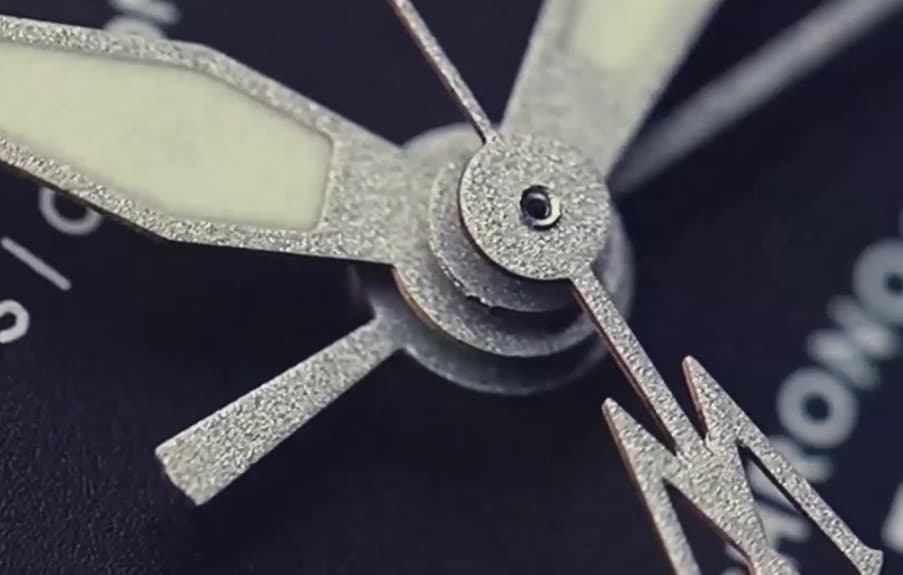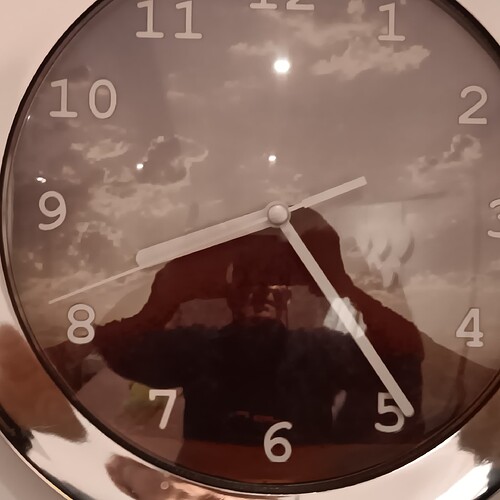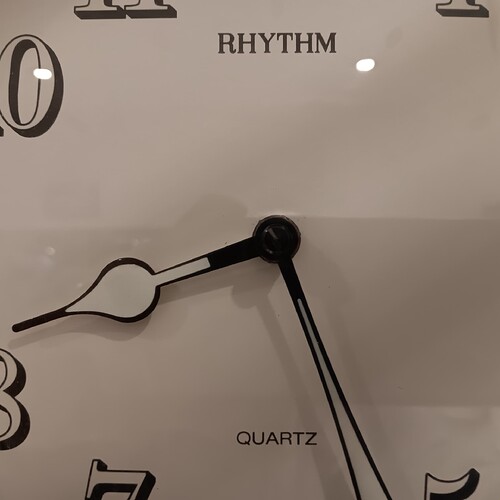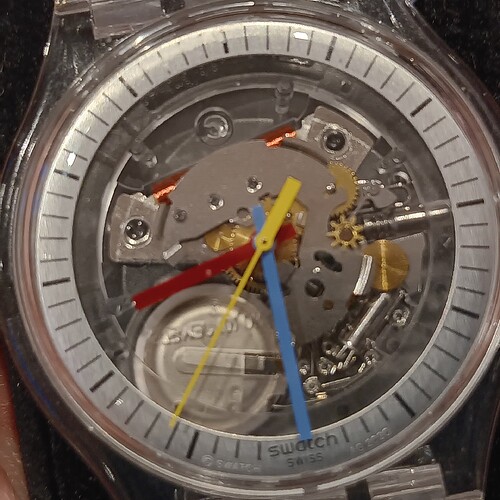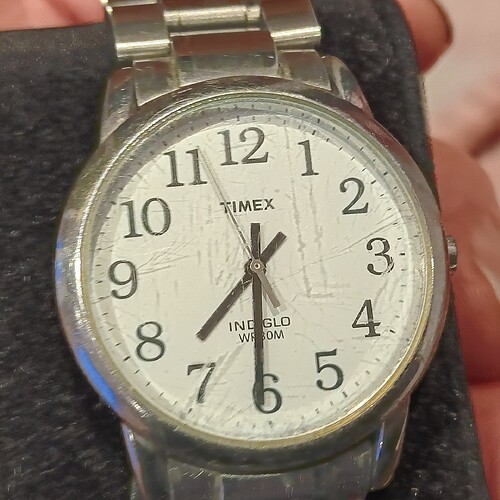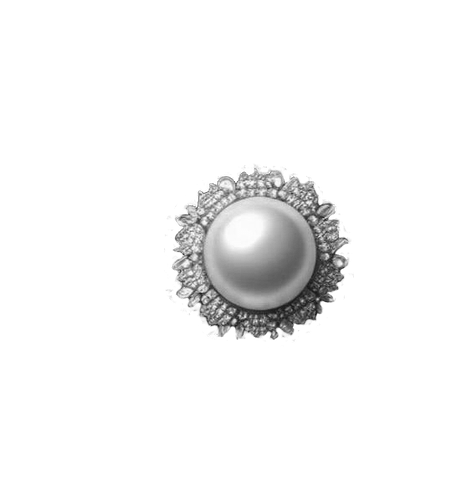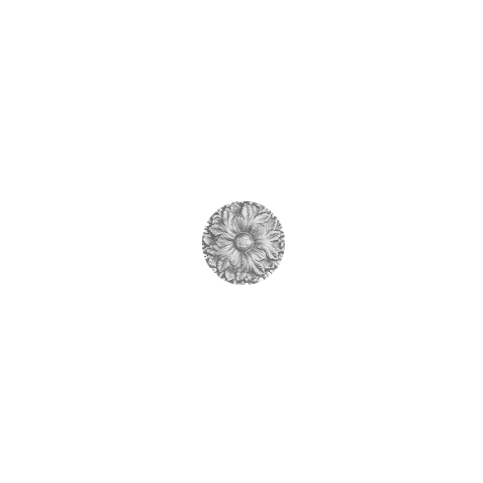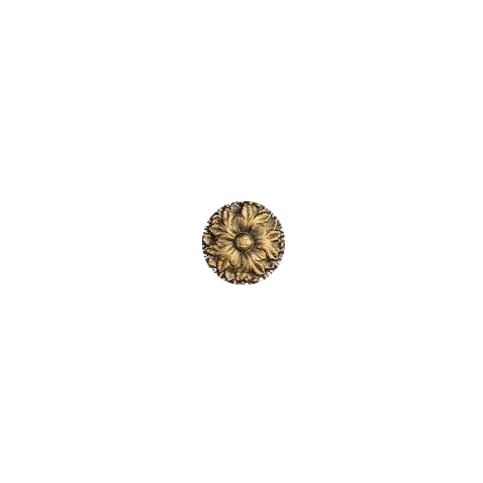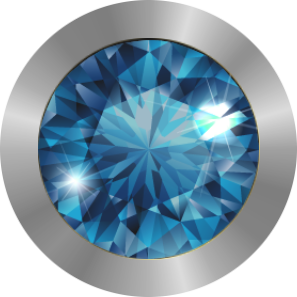This is precisely what makes this forum the best out there
Not just in that one case. Almost every classic mechanical watch has the 3 main hands simply pressed with their inner opening tubular rim on the 3 concentric shafts stacked on each other like sleeves. They are held just by friction of tight fit. For that reason there is mostly only the thinnest one visible like a rounded end of a pin (if it even manages to stick out of that “tube”), as the lowers are usually covered by the upper hand ring.
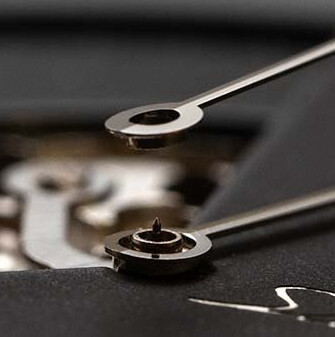
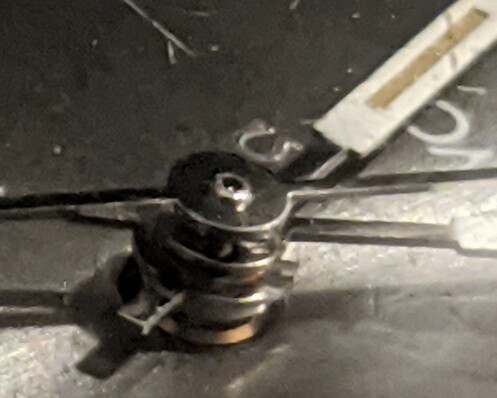
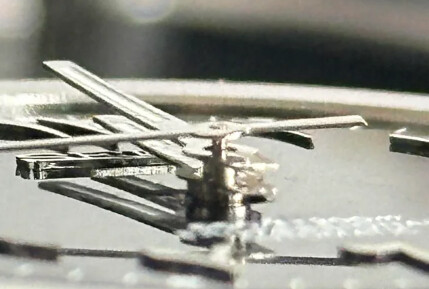
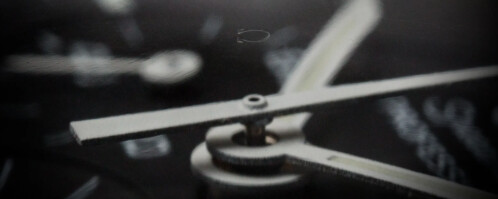
And what may look like a rivet is probably just a pressed or soldered tube in the tiny sheet metal hand. An insert (ok maybe in form of hollow rivet), that makes the hole edges more durable and in proper shape for the cases of removing and reinstalling by watchmaker during service.
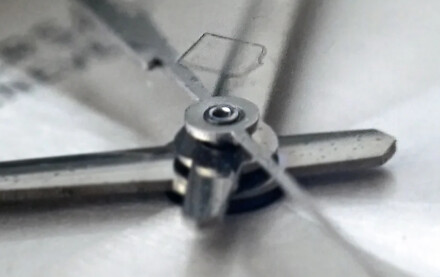
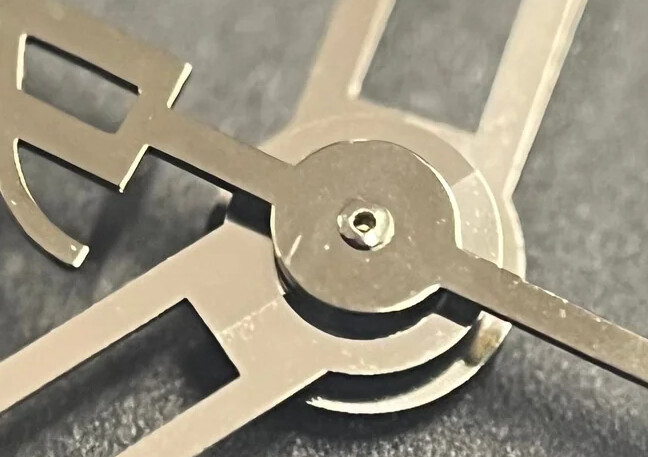
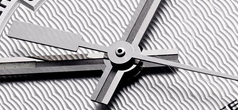
This may mimic it on colored hands, but on tiny display it will be degraded to like few pixels:
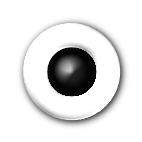
Some second hands may even have the hole completely covered
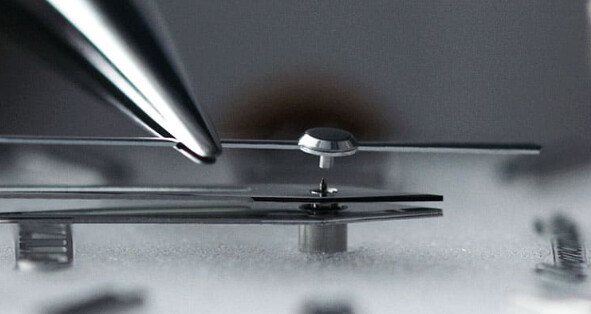
The Clocks I have have Bosses or something on the seconds hand . I mark the Bosses as they are actuslly rotating to see if it is working rather than taking it off the wall to listen to it . The few Mechanical / Quarttz watches I have left have holes in the centre I suppose that is in case the taper of the seconds shaft is slightly different . It has a chance to come through rather than bottom . I wonder how Rolex do it .
.
Sharing keeps the world go round ![]() And smart watch hands
And smart watch hands ![]()
That explains a lot, thanks for the detailed pics!!! As a side-effect my respect for horologists just grew ten-fold (was pretty high before, though). Insane precision.
I may have missed those details in real-life because of my myopia (of the eyes and the brain, heh). Once one gets used to things just working in the background, one tends to lose sight of all the effort that went into all those little helpers of everyday life.
So a possible intermediate conclusion so far could be two cases:
• open end shaft: no special decoration, just stick the second hand on top and leave the shaft as is. Which means some styling of this part of the second hand to catch the eye. A bulge or a shapely tail end to “balance” the optical impression
• “Boss” or screw (+ washer): make it visible, so maybe exaggerate the actual size to provide some eye-candy
@mrscolumbo, this is the one @russellcresser gave me
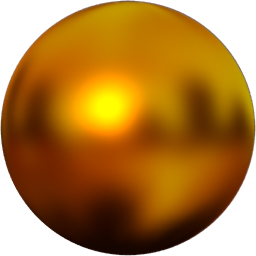
Works well as a centre pin, cog pin or just as edge markers.
You can of course greyscale but it works best as is.
Just read here a lot of discussion on what a centrepoint is but once you have your ‘Rivet’ collection you can apply then to any point about which rotation happens so I prefer ‘Pivot Head’. Yes it is the centre of rotation about the pivot but not always the centre of observation (point), but, yeah, for a central handed face, centrepoint.
In my head. Pivot head
Often only use them on the AOD on a base colour face to say where the second hand would be and add shadow if need be and use the circle middle of the second hand on main as that adds realism due to most watches having the second hand rivet as the most central rotating point. It is often hidden as an underside of the second hand but sometimes accentuated on more expensive watches.
I don’t do real watches much so rivet may be the wrong word, maybe pinion but not sure and will not look it up, just wait to be recorrected.
My take is:
If you don’t need them on a face, don’t use them but they are just way cool when a pinion point needs to be highlighted, so find one that fits your design.
Congratulations to everyone. You are beautiful!!!
So okay, some expensive version of a centerpoint could be a ruby. I remember the time i spent on that centerpoint, never again. If i remember correctly i used a image of the ruby, and placed several red triangle shapes on it and let them rotate and flicker on the opacity. This face still sells very expensively on the black market. ![]()
Later on i decided to use the centerpoint for my personal beautiful logo. What else should be there at the center of the watch, of the world …
Greetings
BC
Whoa! Haute Joaillerie!!!
